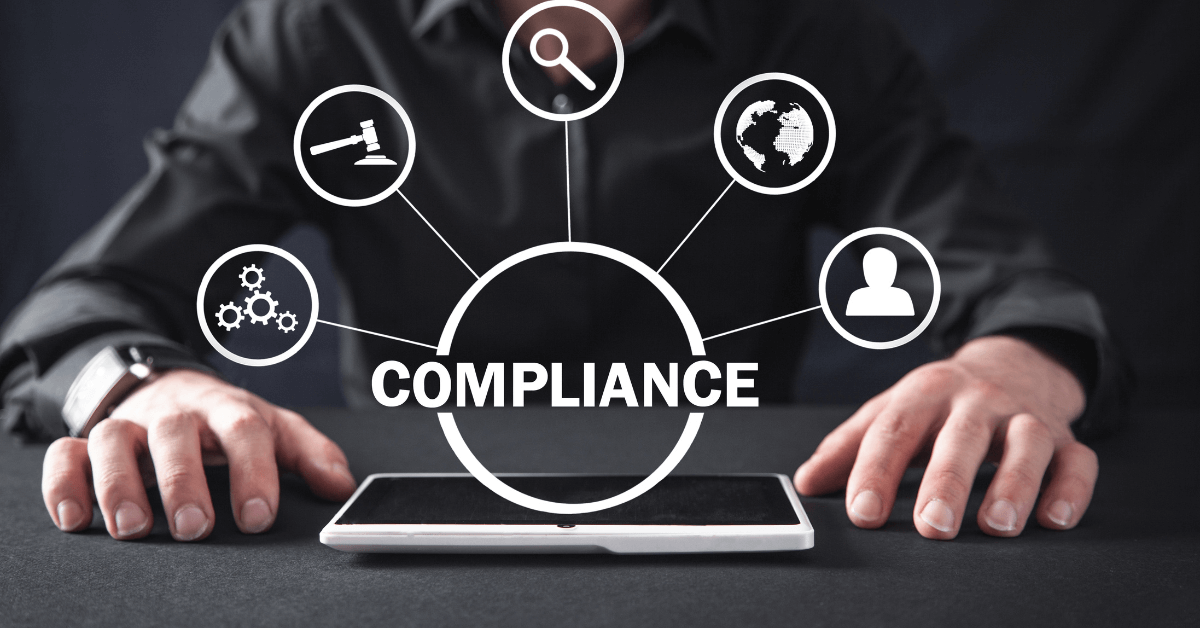Blockchain technology has revolutionized the way we perceive digital trust and transactions. Its potential for altering financial markets, supply chains, and even voting systems is undeniable. However, with great innovation comes the need for regulation. Blockchain compliance is the balancing act between fostering technological growth and ensuring it aligns with legal standards designed to protect consumers and maintain market integrity.
Understanding the basics of blockchain and its relevance
- Immutable ledger of transactions
- Decentralization and increased security
Importance of blockchain compliance in the current technological era
- Preventing fraud, money laundering, and other illegal activities
- Providing a safe environment for innovation and investment
Blockchain, at its core, is a distributed ledger that allows for the immutable recording of transactions. Decentralization, one of the key features of blockchain technology, underscores the necessity for robust compliance frameworks. Without centralized authority, ensuring that transactions on a blockchain adhere to regulations becomes far more complex, since there isn’t a traditional ‘gatekeeper’ enforcing rules.
Explanation of blockchain technology
- Chain of blocks containing transaction data
- Encrypted and linked to the preceding block for security
Introduction to decentralized systems and their influence on compliance
- Shift from centralized authority to network-based verification
- Difficulties in applying traditional regulatory models
The transition from the centralized Web 2.0 to the decentralized Web 3.0 brings a paradigm shift in how data is handled, processed, and regulated. Web3, powered by blockchain and associated technologies, heralds a new age of the internet where user privacy, data ownership, and decentralized applications (DApps) take center stage. In this emerging landscape, considering the Web3 framework is crucial for compliance, as the traditional Web2 infrastructure is significantly different in terms of control and data distribution mechanisms.
Overview of Web3 and how it differs from Web2
- User-controlled data and improved privacy
- Decentralized networks over single-entity control
Significance of compliance in the transition to Web 3.0
- New regulatory challenges and opportunities
- Adapting compliance frameworks for decentralized architectures
In the realm of blockchain compliance, two critical regulatory concepts dominate the discussion: Know Your Customer (KYC) and Anti-Money Laundering (AML). These serve as the foundation for legal guidelines in the financial sector, seeking to prevent identity theft, financial fraud, and the funding of criminal activities. However, within the inherently pseudonymous nature of blockchain transactions, implementing KYC and AML is complex.
KYC and AML Regulations
- Mandated checks to verify user identities
- Legal requirements to monitor and report suspicious activities
The challenges of enforcing KYC and AML in decentralized landscapes
- Balancing privacy with regulatory requirements
- Developing technology solutions for identity verification and transaction monitoring
Smart contracts—self-executing contracts with the terms directly written into code—are another breakthrough application of blockchain. They enable automatic and trustless executions of agreements, but they also necessitate a comprehensive legal framework. When it comes to designing smart contracts for DeFi platforms, compliance is not an afterthought; it’s an essential component baked into the developmental process.
Understanding the role of smart contracts in compliance
- Automating compliance processes
- Integrating regulatory requirements within the code
Compliance considerations for DeFi and smart contract design
- Building in mechanisms for law enforcement access
- Ensuring smart contracts are updatable in line with evolving regulations
Cryptocurrencies and NFTs present a novel use case for blockchain beyond traditional finance. While they have democratized investment and created new economic ecosystems, they’ve also led regulators worldwide to play catch-up in establishing clear-cut compliance protocols.
Cryptocurrencies and NFTs
- Regulatory frameworks around token sales and transactions
- Identifying ownership and trade of digital assets for tax purposes
Blockchain’s application extends to streamlining supply chains and fostering transparent, efficient decentralized applications (DApps). Here, compliance ensures the legitimacy of products, protects against counterfeit goods, and affirms that DApps operate within legal confines.
Conclusion
Understanding these key concepts provides a foundation for recognizing the importance and complexity of blockchain compliance. As we advance towards a more interconnected, blockchain-driven world, the significance of regulation in this field only heightens. Utilizing the insights from this article can guide creators, users, and regulators in navigating these waters effectively.
Key Takeaways
| Aspect | Details |
|---|---|
| Basics of Blockchain | – Immutable ledger – Decentralization and increased security |
| Blockchain Compliance | – Prevents illegal activities – Ensures a secure environment for innovation |
| Decentralized Systems | – Shift from central authority to network verification – Challenges in traditional regulatory applications |
| Web3 vs Web2 | – Enhanced user privacy and data control – Need for new compliance frameworks |
| KYC & AML | – Identity verification – Reporting of suspicious activities |
| Smart Contracts | – Automating compliance processes – Need for updates with regulation changes |
| Cryptocurrencies & NFTs | – Frameworks for token sales – Ownership and tax regulation |
| Supply Chains & DApps | – Ensuring product legitimacy – Compliance in DApps operations |
Hey, it’s Nicole! A tech enthusiast with over two decades of immersive exploration into the ever-evolving world of technology. From delving into the intricacies of AI and navigating the realm of apps to unraveling the mysteries of blockchain, dissecting gadgets, and indulging in the world of gaming – my journey has been nothing short of exhilarating.
My mission? It’s simple: I’m here to demystify technology and make it accessible to everyone. Whether you’re a tech novice taking your first steps into the world of AI or a seasoned enthusiast seeking the latest gadgets, consider me your guide.
Join me on this thrilling expedition through the digital landscape, where we’ll explore, learn, and conquer together. Let’s transform the world of tech into your personal playground!
